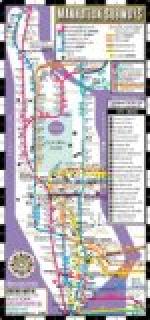At the forward end of what is known as the No. 1 end of the car all the wires are carried to a slate switchboard in the motorman’s cab. This board is 44 x 27 inches, and is mounted directly back of the motorman. The window space occupied by this board is ceiled up and the space back of the panels is boxed in and provided with a door of steel plate, forming a box, the cover, top, bottom, and sides of which are lined with electrobestos 1/2-inch thick. All of the switches and fuses, except the main trolley fuse and bus-line fuse, which are encased and placed under the car, are carried on this switchboard. Where the wires are carried through the floor or any partition, a steel chute, lined with electrobestos, is used to protect the wires against mechanical injury. It will be noted from the above that no power wiring, switches, or fuses are placed in the car itself, all such devices being outside in a special steel insulated compartment.
A novel feature in the construction of these cars is the motorman’s compartment and vestibule, which differs essentially from that used heretofore, and the patents are owned by the Interborough Company. The cab is located on the platform, so that no space within the car is required; at the same time the entire platform space is available for ingress and egress except that on the front platform of the first car, on which the passengers would not be allowed in any case. The side of the cab is formed by a door which can be placed in three positions. When in its mid-position it encloses a part of the platform, so as to furnish a cab for the motorman, but when swung parallel to the end sills it encloses the end of the platform, and this would be its position on the rear platform of the rear car. The third position is when it is swung around to an arc of 180 degrees, when it can be locked in position against the corner vestibule post enclosing the master controller. This would be its position on all platforms except on the front of the front car or the rear of the rear car of the train.
The platforms themselves are not equipped with side gates, but with doors arranged to slide into pockets in the side framing, thereby giving up the entire platform to the passengers. These doors are closed by an overhead lever system. The sliding door on the front platform of the first car may be partly opened and secured in this position by a bar, and thus serve as an arm-rest for the motorman. The doors close against an air-cushion stop, making it impossible to clutch the clothing or limbs of passengers in closing.
[Illustration: INTERIOR VIEW—SKELETON FRAMING OF STEEL CAR]
Pantagraph safety gates for coupling between cars are provided. They are constructed so as to adjust themselves to suit the various positions of adjoining cars while passing in, around, and out of curves of 90 feet radius.
On the door leading from the vestibule to the body of the car is a curtain that can be automatically raised and lowered as the door is opened or closed to shut the light away from the motorman. Another attachment is the peculiar handle on the sliding door. This door is made to latch so that it cannot slide open with the swaying of the car, but the handle is so constructed that when pressure is applied upon it to open the door, the same movement will unlatch it.




